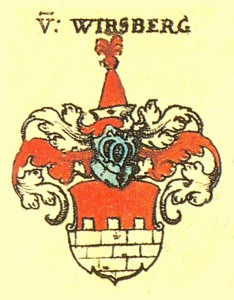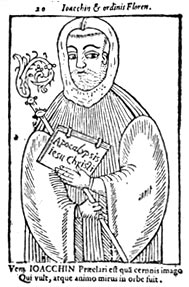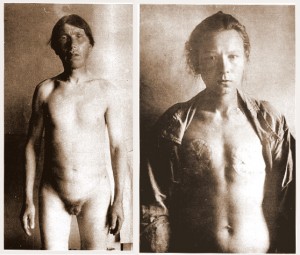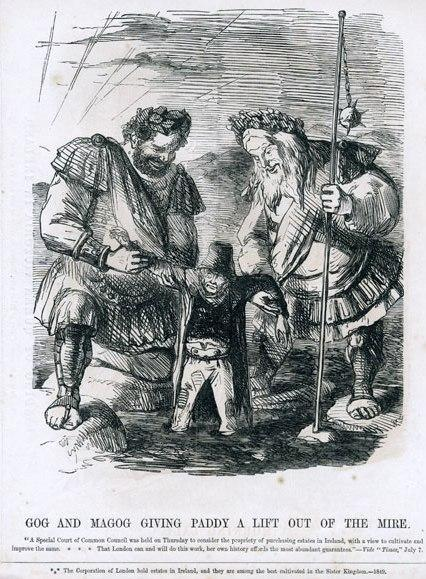 It is easy for us to associate apocalyptic and millennial movements with people who are undergoing social or economic stresses, or suffering hostile treatment of some kind. The idea is that apocalyptic fantasies of divine judgment to be followed by a reversal of fortunes in a millennial setting are a compensatory mechanism. But that’s not necessarily so. Not everyone who experiences the stresses of these kinds embraces an apocalyptic cult; moreover, Stephen L. Cook in his book Prophecy & Apocalypticism lists ten historical millennialist groups or persons from quite well-to-do and relatively comfortable backgrounds. The following come from pages 35 to 40.
It is easy for us to associate apocalyptic and millennial movements with people who are undergoing social or economic stresses, or suffering hostile treatment of some kind. The idea is that apocalyptic fantasies of divine judgment to be followed by a reversal of fortunes in a millennial setting are a compensatory mechanism. But that’s not necessarily so. Not everyone who experiences the stresses of these kinds embraces an apocalyptic cult; moreover, Stephen L. Cook in his book Prophecy & Apocalypticism lists ten historical millennialist groups or persons from quite well-to-do and relatively comfortable backgrounds. The following come from pages 35 to 40.
1. The Free Spirit Brethren
Where: Europe
When: From the thirteenth century onward
What: millennialists
Who: members of privileged strata of society; less affluent members of intelligentsia; from wealthy, well-established family backgrounds; “idle women from the elite of urban society”
 2. The Wirsberg Brothers
2. The Wirsberg Brothers
Where: Europe
When: 1450’s and 1460’s
What: millennialsts
Who: Brothers Janko and Livin of Wirsberg were millennial catalyst figures even though they were rich and powerful

3. Savonarolan millennialism
Where: Florence
When: End of fifteenth century
What: The millennial instruction was taken up as the basis for the civic program of the Florentine republic
Who: Famous civic reformer Savanarola proposed a worldview addressed to political officials, the upper class, as well as the poor.
4. The Franciscan Spirituals
Where: Calabria
When: Twelfth century

What: Revival of Christian millennialism. Joachimism (from Joachim de Fiore)
Who: Joachim de Fiore was responsible for the revival. Franciscan Spirituals formed the centre of the movement and consisted mostly of people who had given up great wealth. These were people who left the privileged groups, the nobility and leading merchant families.
5. A group of Spanish colonizers under Franciscan friar
Where: New Spain
When: Sixteenth century
What: Another branch of Joachimite millennialism
Who: Led by Gerónimo De Mendieta, Franciscan friar, acting on behalf of Spanish monarchy; the group wielded episcopal, government and economic power.
6. The Skoptzi millennial sect
Where: Russia
When: Eighteenth and nineteenth centuries
What: Expected an imminent judgement that would usher in the millennial kingdom. All males were castrated in preparation for the millennial reign that was prophesied to be sexless.
Who: Noblemen, state officials, the wealthy were included.


7. Jewish messianic movement led by Sabbatai Sevi
Where: Ottoman empire
When: Seventeenth century
What: Sabbatai Sevi declared himself the Messiah in May 1665
Who: Sabbatai Sevi attracted among his followers burghers, elders, wealthy merchants, rabbinic scholars. The least poor and persecuted groups were the leaders in the propagation of Sabbatian millennial beliefs.
8. Irvingite Apostolic Catholic Church

Where: Britain
When: Nineteenth century
What: Adventist theology
Who: Membership was generally of middle and upper classes. Some leaders belonged to the wealthiest classes. Apostle Frank Sitwell owned Barmoor Castle; founder of the group John Bate Cardale was a solicitor who owned considerable property; apostle Henry Drummond was one of the wealthiest persons in England, member of Parliament and belonged to aristocratic circles; apostle Spencer Perceval also a Parliamentarian and member of aristocracy. Another apostle, Thomas Carlyle, joined after becoming a Baron in 1824.
9. Brotherhood of the Sun (subsequently Sunburst)

Where: Santa Barbara, California
When: Latter twentieth century
What: See pages 38-39 of Trompf’s Cargo Cults and Millenarian Movements
Who: Catalyst figure of the group, Norman Paulsen, had an annual salary of $150,000; The group owned a chain of supermarkets and wharehouses and a central headquarters on a 4000 acre ranch.
10. President Ronald Reagan
(Cook wrote before Bush II )
During his tenure of public office is said to have identified international events with biblical apocalyptic passages. At a formal dinner as governor of California he expounded Ezekiel to guests, telling them Gog was Russia and “it can’t be long now”. Expressed similar thoughts as President.
See Gog and Magog: Modern Apocalypticism

Neil Godfrey
Latest posts by Neil Godfrey (see all)
- What Others have Written About Galatians (and Christian Origins) – Rudolf Steck - 2024-07-24 09:24:46 GMT+0000
- What Others have Written About Galatians – Alfred Loisy - 2024-07-17 22:13:19 GMT+0000
- What Others have Written About Galatians – Pierson and Naber - 2024-07-09 05:08:40 GMT+0000
If you enjoyed this post, please consider donating to Vridar. Thanks!

You didn’t include Herbert W Armstrong and The Worldwide Church of God. Was that on purpose?
Anyway, for the benefit of the reading public, Armstrong preached a post-trib rapture at the second coming of Christ amidst the most preposterous garbage: 1975 in Prophecy and The United States and Britain in Prophecy.
I was wanting to keep close to Cook’s list that was focused on those groups that “deprivation theory” apparently cannot explain. (I only deviated to link to websites that filled in some info omitted by Cook.) Herbert Armstrong was “down and out” at the time of his conversion and used his advertising skills to regain wealth through the cult. He did attract a few from very well-to-do families but I don’t think the cult overall could be said to be driven by people of such backgrounds.
Well you got me there, Neil. I should’ve remembered.
Possibly even the well-off think that they, or the unwashed masses, could do better?
Boredom, it’s all down to boredom. The idle wealthy are just bored to sobs and looking for something to lift their lives to significance; cosmic scale significance.
To be fair, most people don’t think too much about their existence. They just vibrate: they go along to get along. And that should be okay.
Those who do think about their existence tend to believe they are living in an unprecedented age for one reason or another, and since the Age of Enlightenment, they’ve been right (if only due to technological change). A very small minority of those who do think about their existence know that, for all intents and purposes, things are pretty much the way they’ve always been, and they use that knowledge to transfer wealth and power from the other thinkers to themselves (the vibrating ones have always been serfs).
Religion is politics. In the Western world, it can be argued that church and state were one until the Age of Enlightenment.
Some non Western apocalyptic movements also deserve attention.
Native American cultures gave rise to apocalyptic prophets in response to the white encroachment that was terminating their traditional way of life and decimating their populations. The European imported plagues of smallpox, measles, cholera, etc. that wiped out entire Native populations in a very short period of time were often interpreted as divine punishments that called for community wide acts of atonement.
Some of the major prophetic figures include Charley, Tenskwatawa, Isa-tai, and Wovoka/Jack Wilson.
In 19th century China, the TaiPing movement resulted from the hybridization of the long suppressed and dormant Manichean religion and the newly introduced ideals of social justice introduced by Protestant missionaries. The movement arose in a time of acute social disruption and economic upheaval, where those with access to Western trade grew immensely rich in a short period of time, while the general population became increasingly impoverished.
Sorry. I had not addressed the main thrust of the original post.
To address the concept that being directly oppressed and poor is not a requirement for apocalyptic ideation.
Tenskwatawa, and Isa-tai were both members of the leadership class of their respective tribes, and the founders of the TaiPing were members of the educated class. Apocalyptic movements that gain widespread support seem to originate where there is a general feeling that “something is not right” with the way we are living regardless of their class substrate.
Thanks for your patience